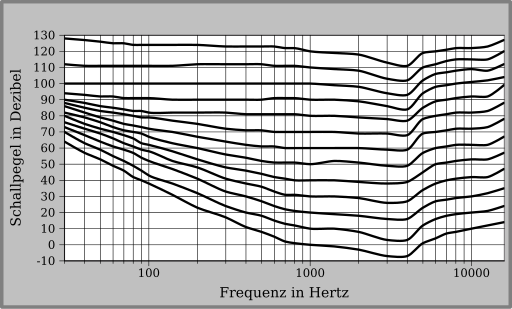Harmonics and equal loudness contour - a consideration of sound design
On an acoustic instrument, the thinking of loudness is more than just the volume in dB. When a note is played on an acoustic instrument, a series of overtones is also produced. The fundamental and overtones above also contribute to the loudness. When playing in louder volume compared to softer, the loudness in decibel of the fundamental does not have a big difference, but the overtone pattern has an obvious increase. Example below.
Using a reversed example to explain the same phenomenon, this is a pure data patch (Example below). It is playing with the same amplitude or decibel. With adding more harmonics to it, the volume sounds louder to our ears.
In terms of sound design, using fewer harmonics on a synthesizer results in a mellow softer tone; on the contrary, harsher and buzzier tone.Why it is louder with more harmonics, the short answer is more people (harmonics) playing at the same time - louder. But if you notice the natural decay of the harmonic series, this is part of the answer. Our ears have a different sensibility of various bands of frequency. According to the chart below, 4kHz is the most sensitive band. We need less volume to feel the same "loudness" as other band frequencies. Back the flute sample, in forte, the richer overtones cover more the bands of our sensitive frequencies around 4kHz, when I only played A4=440Hz.
 |
| An equal loudness contour graph |


Comments
Post a Comment